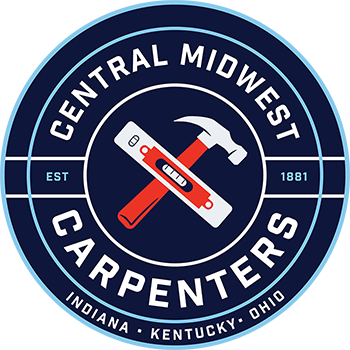NOTICIAS
HOT ITEM


Recent News
 Scholarship Winners | 2025abril 24, 2025 - 10:47 am
Scholarship Winners | 2025abril 24, 2025 - 10:47 am 2024 Indiana Kentucky Graduate Speaker – Kyle Harveymarzo 28, 2025 - 1:49 pm
2024 Indiana Kentucky Graduate Speaker – Kyle Harveymarzo 28, 2025 - 1:49 pm Military Outreach Makes Big Impactmarzo 24, 2025 - 3:29 pm
Military Outreach Makes Big Impactmarzo 24, 2025 - 3:29 pm 2025 Central Midwest Sisterhood Updatemarzo 3, 2025 - 5:13 pm
2025 Central Midwest Sisterhood Updatemarzo 3, 2025 - 5:13 pm Craft Spotlight – Justin Rogersfebrero 26, 2025 - 4:44 pm
Craft Spotlight – Justin Rogersfebrero 26, 2025 - 4:44 pm Ohio’s Newest Journey-Level Carpenters: Class of 2025febrero 25, 2025 - 12:55 pm
Ohio’s Newest Journey-Level Carpenters: Class of 2025febrero 25, 2025 - 12:55 pm Craft Spotlight – Brandon Huffmanfebrero 19, 2025 - 3:26 pm
Craft Spotlight – Brandon Huffmanfebrero 19, 2025 - 3:26 pm


Tulsa contractor pays more than $200K in unpaid wages
/0 Comentarios/en News /por IKORCCWiljo Interiors was sub-contracted by prime contractor Cherokee CRC LLC to work on a $2.9 million federally-funded construction project at the Riverside Indian School in Anadarko, Oklahoma. Wiljo Interiors then brought in an additional sub-contractor, Strong Rock Drywall LLC, of Tulsa, Oklahoma, misclassified its owner and workers as independent contractors, yet dictated what they would pay them. Strong Rock also failed to pay its employees as required by law, but their work was directed and controlled by Wiljo. Therefore, the division found there was a joint employment relationship between the two employers, holding both employers responsible, both individually and jointly, for compliance with the Fair Labor Standards Act (FLSA).
Strong Rock Drywall employees worked 50 to 70 hours per week, but since they were misclassified as independent contractors, were paid only straight time for all the hours they worked, being denied legally-required overtime for hours beyond 40 per week. Employees were also denied fringe benefit payments required on this federally-financed contract under the Davis Bacon Act.
Wiljo Interiors, Inc. paid $208,756 in overtime back wages, prevailing wages and fringe benefits to 178 Strong Rock construction workers to remedy the violations. Additionally, the company acknowledged they were the controlling employer and committed to properly classifying workers as employees, using the correct job classification when determining workers’ prevailing wage rates and paying fringe benefits required by law in the future.
“When a joint-employment relationship exists, we will hold those companies accountable when wage violations occur and workers are cheated,” said Betty Campbell, acting regional administrator for the Wage and Hour Division in the Southwest. “Simply labeling a worker as an independent contractor does not mean they are not truly an employee. Misclassified employees are not only denied fair wages, they are also denied access to critical benefits and protections. The Wage and Hour Division is vigorously pursuing corrective action in those situations when workers are, in fact, employees to ensure that they are paid their legally-required wages and to level the playing field for employers who play by the rules.”
Source: www.dol.gov
Louisiana Workforce Commission Focusing on Payroll Fraud
/0 Comentarios/en News /por IKORCCIn response to the News 8 series, the Louisiana Workforce Commission (LWC) issued a press release on its anti-payroll fraud efforts related to unemployment contributions. The LWC is expecting a record year. So far in 2015, auditors have found 12,782 misclassified employees and $83 million in underreported wages, resulting in collecting an additional $923,000 in unemployment taxes. The numbers don’t show how much of that was in the construction industry. In 2010 they found fewer than 300 misclassified employees. The LWC efforts are aided by anti-fraud software.
Worker Comp Violations Expensive
/0 Comentarios/en News /por IKORCCContractors that break the law often do not have workers’ compensation coverage. So who pays when workers are injured? In Connecticut, the Second Injury Fund (SIF) pays the bills. In fiscal year 2015, the SIF paid $3.9 million. The SIF does seek recovery from non-compliant employers. Unfortunately, the SIF was only able to recover $775,000. Law-abiding employers, of course, pick up the tab for the rest through state assessments.
TV News 8 and Central South Council Expose Payroll Fraud
/0 Comentarios/en News /por IKORCCJason Engels, EST of the Central South Regional Council, was interviewed by News 8 investigative reporter Lee Zurick for a three part series on payroll fraud. The first broadcast introduced the problem and exposed that it costs Louisiana taxpayers $250 million annually. Part 2 delved into the law-breaking scheme used on numerous prevailing-rate projects by shady contractors and the lack of meaningful enforcement. The final broadcast showed how legislation with stiff penalties was blocked by a state senator who owns a construction company that subcontracted to a company that allegedly wrongly classified its workers. Rep. Smith (D) pledged on camera to re-introduce legislation with tougher penalties, and Rep. Broadwater (R) said he’d support a task force of state agencies and district attorneys.
When asked if a business saving hundreds of thousands of dollars would stop breaking the law if they only risked a $250 or $500 fine, Jason responded, “You wouldn’t. The penalties have to be increased through legislation on these contractors to get over this slap on the wrist…..Start putting some people in jail.”
Link to the series from PayrollFraud.net “Billion dollar blue print for a taxpayer rip-off.”
State Raids Construction Site of Luxury Honolulu Mall
/0 Comentarios/en News /por IKORCCThe Ala Moana Center was raided by state investigators over charges of contractors committing payroll fraud. Investigators from state tax, labor and business departments went to the luxury mall in response to complaints from the Hawaii Construction Alliance. The Alliance is a group of trade unions that includes the Hawaii Regional Council of Carpenters.
Information on alleged improper practices was gathered by undercover informants, including a video of workers being paid in cash. Watch a news report on this raid through the Top of the News section of PayrollFraud.net.
“Workers are being paid in cash by these contractors and subcontractors which begs the question: are they filing the proper paperwork with the state?” said Tyler Dos Santos, Alliance Executive Director.